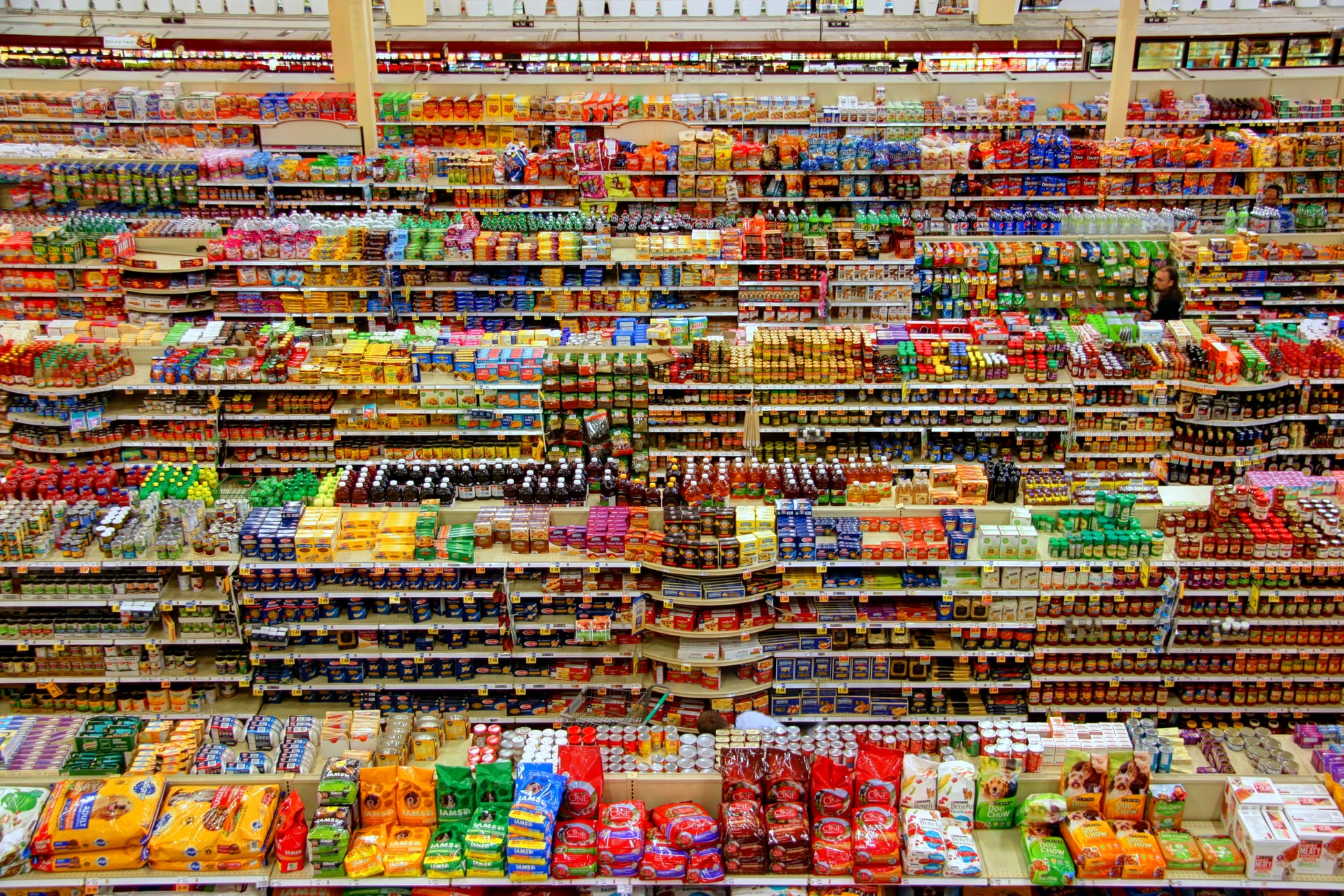CPG Stalwarts Respond to D2C Challenge with Innovation
 Groceries section of the Fred Meyer superstore in Redmond, WA. Credit: Peter Bond
Groceries section of the Fred Meyer superstore in Redmond, WA. Credit: Peter Bond
We caught a few weeks ago that robot shipments outside the automotive sector eclipsed the automotive sector for the first time ever. One of the sectors that increased demands for robots was the consumer goods sector. As traditional consumer package goods (CPG) companies develop direct to consumer (D2C) channels, different manufacture and supply chain strategies are needed to meet this demand. As a result, sharp Exponential Technology readers should not be surprised to discover that CPG companies such as Proctor & Gamble, Colgate-Palmolive, Coca-Cola and others are among the most innovative firms in the 2020 Drucker Institute Company Rankings.
Visual Inspection
LaserFactory: Fabricating fully functional devices
MIT CSAIL also uses AI to reduce sheet metal waste and Altair Engineering’s Inspire Mold software simulates injection molding.
Assembly Line
Rearranging the Visual World
Transporter Nets use a novel approach to 3D spatial understanding that avoids reliance on object-centric representations, making them general for vision-based manipulation but far more sample efficient than benchmarked end-to-end alternatives. As a consequence, they are fast and practical to train on real robots. We are also releasing an accompanying open-source implementation of Transporter Nets together with Ravens, our new simulated benchmark suite of ten vision-based manipulation tasks.
Evolution of control systems with artificial intelligence
Control systems have continuously evolved over decades, and artificial intelligence (AI) technologies are helping advance the next generation of some control systems.
The proportional-integral-derivative (PID) controller can be interpreted as a layering of capabilities: the proportional term points toward the signal, the integral term homes in on the setpoint and the derivative term can minimize overshoot.
Although the controls ecosystem may present a complex web of interrelated technologies, it can also be simplified by viewing it as ever-evolving branches of a family tree. Each control system technology offers its own characteristics not available in prior technologies. For example, feed forward improves PID control by predicting controller output, and then uses the predictions to separate disturbance errors from noise occurrences. Model predictive control (MPC) adds further capabilities to this by layering predictions of future control action results and controlling multiple correlated inputs and outputs. The latest evolution of control strategies is the adoption of AI technologies to develop industrial controls.
Progress Continues on Industrial Open Source Software
The Eclipse Foundation, an independent, not-for-profit corporation created to foster a vendor-neutral approach to open source innovation in the Industrial Internet of Things (IIoT) space, has released its 2020 annual community report.
The Eclipse Foundation foresees the open source ecosystem continuing to expand as companies become more software-centric, noting that “digitalization is the single biggest industry trend in the world today.”
Evolving control systems are key to improved performance
For decades, the control system was constrained by physical hardware: hardwired input/output (I/O) layouts, connected controllers and structured architectures including dedicated networks and server configurations. Now, the lower cost of processing power and sensing, the evolution of network and wireless infrastructure, and distributed architectures (including the cloud) are unlocking new opportunities in control systems. Additionally, emerging standards for plug-and-produce, such as advanced physical layer (APL) and modular type package (MTP) interfaces, will drive significant changes in the way plants design and use control systems over the next decade.
The Evolution of Robotics Force Control
Because repeatability was the most important characteristics of the first robots, they were designed from the start to be very stiff. Over the years, the designs were optimized for stiffness and the manufacturing cost and quality of the robot joints reached unprecedented heights. When targeting new applications that require adaptability instead, it was therefore more convenient to use a standard stiff robot equipped with a sensor at its end-effector (tool).
For example, a robot intended for assembly or finishing tasks would be equipped with a force sensor that continuously measures the contact forces. An algorithm would then compensate the robot motion based on these measurements.
Surge Demand
NASA’s Perseverance rover lands on Mars and uses AI to do it.
